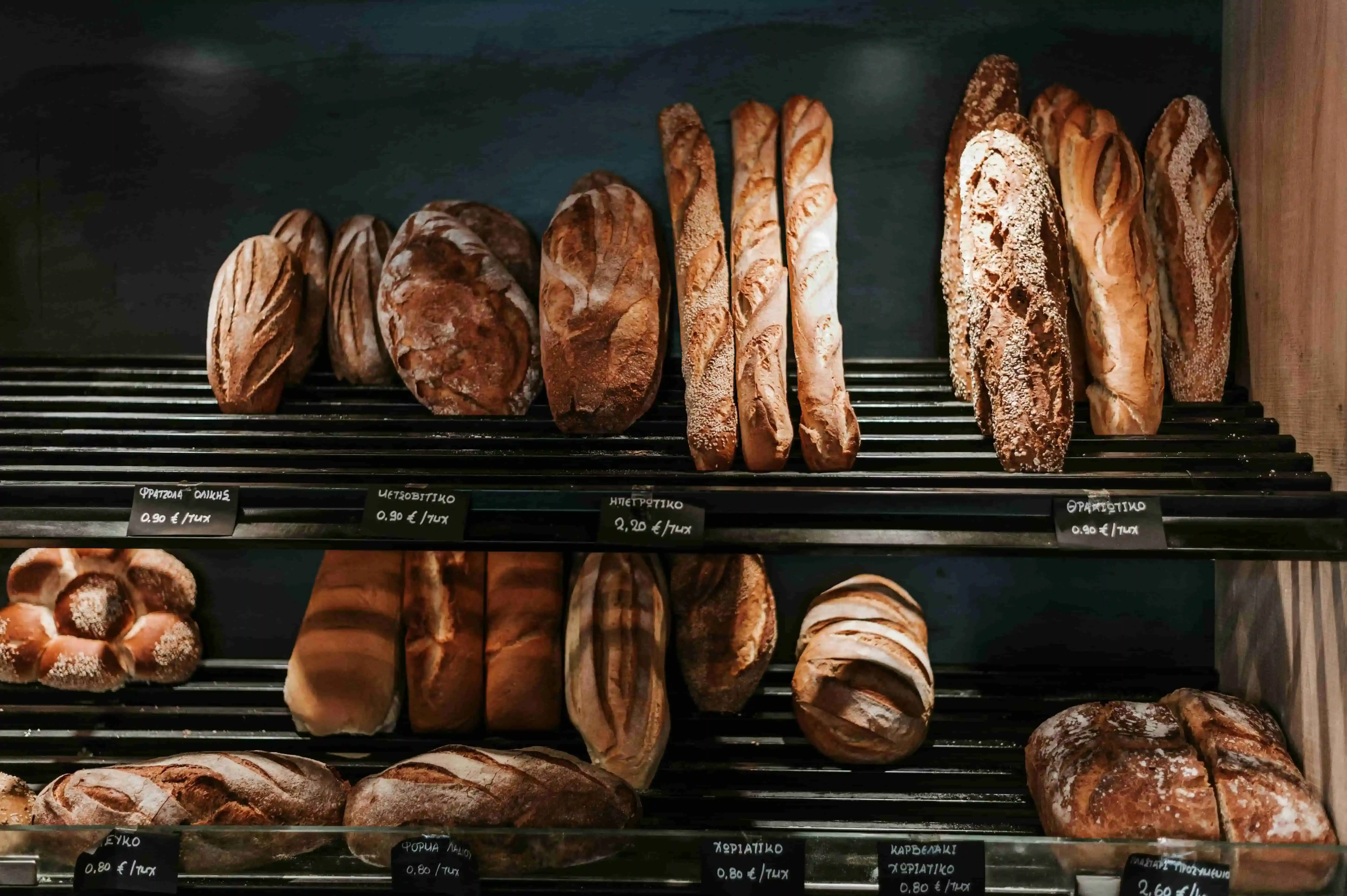Nourishing Bites: Exploring the Healthiest Types of Bread

In the realm of wholesome nutrition, the choices we make extend beyond just what we put between the slices. As a staple in diets worldwide, bread plays a pivotal role in our daily nourishment. However, not all bread is created equal when it comes to health benefits. Join us on a journey through the world of the healthiest types of bread, where each slice brings not just satisfaction but also nourishment.
What Makes Bread More or Less Healthy? Unveiling the Ingredients and Factors
While exploring the healthiest types of bread, it's essential to understand the factors that contribute to the overall health profile of your daily loaf. Here's a closer look at what makes bread more or less healthy, allowing you to make informed choices for your well-being.
Ingredient List Matters: Choose Quality Over Quantity
More Healthy:
- Whole Grains: Opt for bread that lists whole grains as the primary ingredient. Whole grains retain essential nutrients and fiber, promoting better digestion and sustained energy.
- Natural Additions: Look for bread with added seeds, nuts, or dried fruits. These additions not only enhance flavor and texture but also contribute to the bread's nutritional value by providing healthy fats, proteins, and antioxidants.
Less Healthy:
- Refined Grains: Bread made from refined grains lacks the fiber and nutrients found in whole grains. These grains undergo processing that removes the bran and germ, leaving behind a less nutritious end product.
- Excessive Additives: Avoid bread with an extensive list of additives, preservatives, or artificial flavors. Simple ingredient lists with recognizable components usually indicate a healthier choice.
Watch Out for Added Sugars and Sodium
More Healthy:
- Minimal Added Sugars: Choose bread with little to no added sugars. While some sweetness can enhance flavor, excessive sugar content contributes to empty calories and may lead to energy spikes and crashes.
- Low Sodium Content: Opt for bread with lower sodium levels. High sodium intake is linked to various health issues, including hypertension. Selecting bread with moderate salt content supports overall heart health.
Less Healthy:
- High Sugar Content: Bread with high sugar levels can contribute to weight gain and disrupt blood sugar levels. Check labels for hidden sugars under different names like sucrose, high fructose corn syrup, or molasses.
- Excessive Sodium: Bread that contains excessive salt may contribute to increased blood pressure. Be cautious of bread with high sodium content, especially if you already have concerns about your salt intake.
The Importance of Fiber Content
More Healthy:
- High Fiber Content: Fiber is a crucial component for digestive health and can aid in weight management. Choose bread with a higher fiber content, as it promotes satiety and supports overall gastrointestinal well-being.
Less Healthy:
- Low Fiber Content: Bread with minimal fiber offers fewer digestive benefits and may not keep you feeling full for an extended period. Low-fiber diets are associated with constipation and other digestive issues.
Consideration for Special Dietary Needs
More Healthy:
- Gluten-Free Options for Sensitivities: For individuals with gluten sensitivities or celiac disease, opting for gluten-free bread ensures compatibility with their dietary needs.
Less Healthy:
- Non-Compatible Ingredients: Choosing bread with ingredients that trigger allergies or sensitivities can have adverse effects on your health. Always check labels for potential allergens.
Artisanal and Locally Sourced Options
More Healthy:
- Artisanal and Locally Sourced Bread: Consider bread from local bakeries or artisanal producers. These options often use high-quality ingredients, and the bread is freshly baked without the need for extensive preservatives.
Less Healthy:
- Mass-Produced, Highly Processed Options: Some commercially produced bread may prioritize shelf life over nutritional quality. These options may contain more additives and preservatives to prolong freshness.
1. Whole Grain Wonder: Embrace Nutrient-Rich Goodness
Why Whole Grain? Whole grain bread takes the spotlight for its abundance of essential nutrients. Unlike refined grains, whole grains retain the bran, germ, and endosperm, ensuring a robust nutritional profile. Packed with fiber, vitamins, and minerals, whole grain bread offers sustained energy release and promotes digestive health.
Choosing the Best Whole Grain Bread: Look for bread labeled as "100% whole wheat" or "100% whole grain" to ensure you're getting the maximum nutritional benefits. Brands that incorporate diverse whole grains like oats, quinoa, or millet offer an extra nutritional boost.
2. Sourdough Symphony: The Fermented Flour Elixir
Why Sourdough? Sourdough bread is not just a delight for the taste buds; it's a boon for gut health. The fermentation process involved in making sourdough breaks down gluten and phytic acid, making it easier to digest. Additionally, sourdough's unique fermentation produces beneficial compounds, including lactic acid, which supports a healthy gut microbiome.
Choosing the Best Sourdough Bread: Opt for artisanal or traditionally crafted sourdough from reputable bakeries. These often boast simpler ingredient lists, with just flour, water, salt, and natural yeast.
3. Sprouted Grain Sensation: Unlocking Nutrient Potential
Why Sprouted Grain? Sprouted grain bread is a nutritional powerhouse, as the sprouting process enhances nutrient absorption. Sprouting breaks down anti-nutrients, unlocking essential vitamins and minerals. Additionally, sprouted grains may be easier to digest for individuals with sensitivities.
Choosing the Best Sprouted Grain Bread: Look for bread made from a variety of sprouted grains like wheat, barley, or spelt. Verify that the label indicates "sprouted whole grains" for optimal health benefits.
4. Seeded Delight: Adding Texture and Nutrient Boost
Why Seeded? Seeded bread not only brings a delightful crunch but also introduces a range of health benefits. Seeds, such as flaxseeds, chia seeds, and sunflower seeds, contribute omega-3 fatty acids, fiber, and antioxidants to the bread. These elements support heart health, regulate blood sugar, and offer a satisfying texture.
Choosing the Best Seeded Bread: Explore bread varieties with a diverse mix of seeds. Ensure the seeds are visible in the bread, indicating a generous inclusion for maximum health benefits.
5. Gluten-Free Gratification: Meeting Dietary Needs
Why Gluten-Free? For individuals with gluten sensitivities or celiac disease, gluten-free bread is a necessity. Thankfully, the market now offers a plethora of gluten-free options made with alternative flours like rice flour, almond flour, or coconut flour.
Choosing the Best Gluten-Free Bread: Read labels carefully to ensure the absence of gluten-containing grains. Look for gluten-free bread that is also fortified with nutrients like vitamins and minerals.
Conclusion: Crafting Your Nutrient-Rich Bread Basket
As you embark on your journey to select the healthiest types of bread, consider incorporating a variety to meet your nutritional needs. Whole grain, sourdough, sprouted grain, seeded, and gluten-free bread each brings its unique benefits to the table. Remember to read labels, explore artisanal options, and, most importantly, savor every bite of the nourishing symphony that is the healthiest bread for you. Let your bread be more than just a side – let it be a celebration of health and vitality in every slice.


